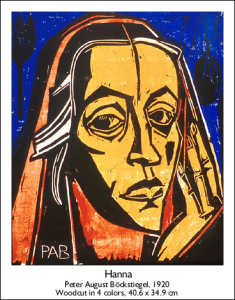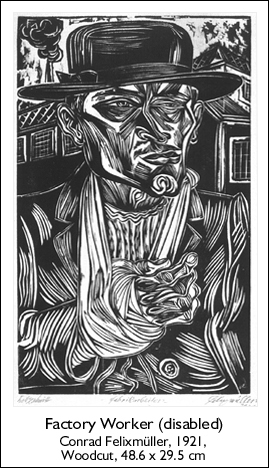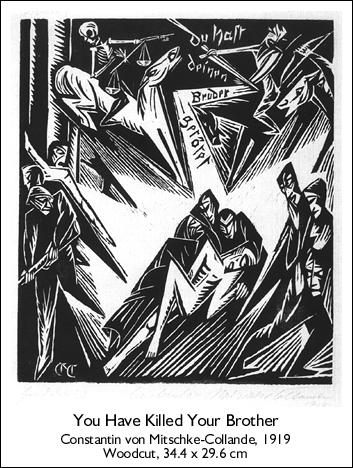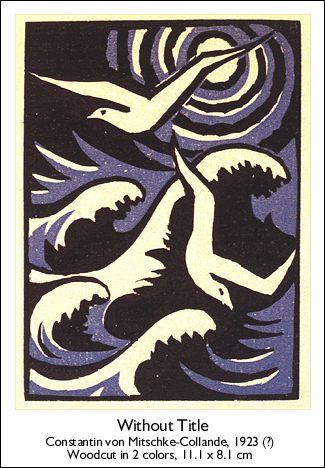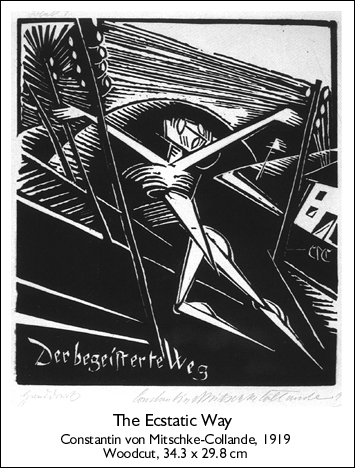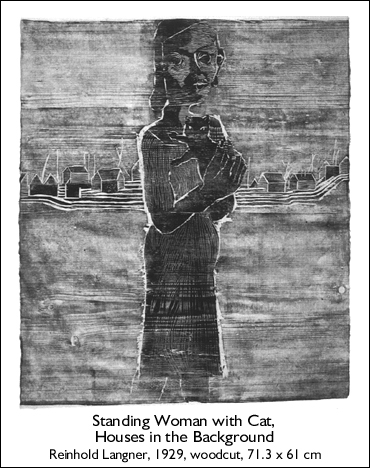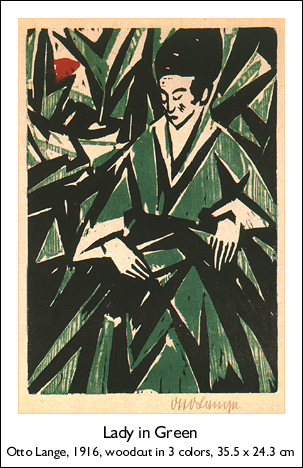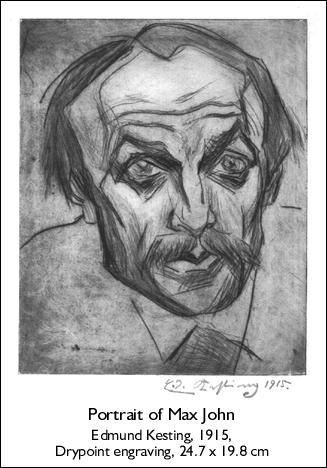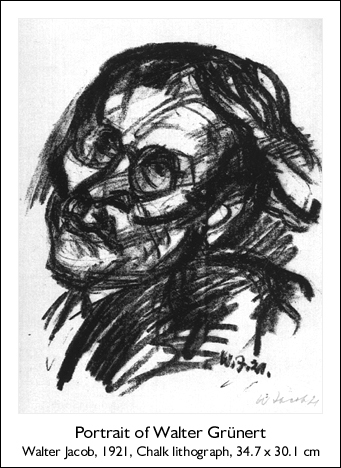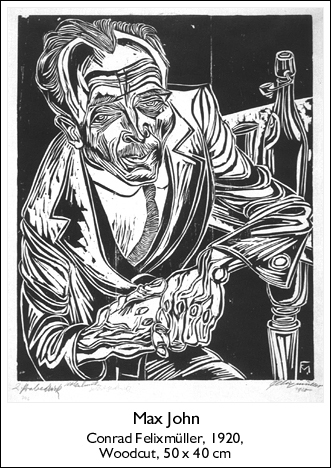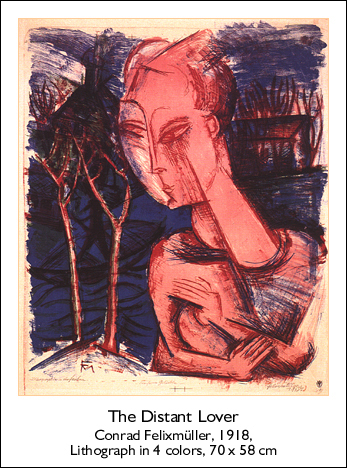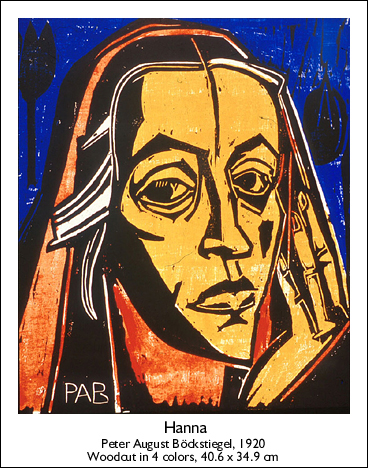Graphic Works from the Lindenau-Museum, Altenburg, Germany
February 18 – March 25, 2001
The Expressionist style was a global phenomenon in the first half of the twentieth century. Historians agree that many of the innovations and far- reaching contributions to this style developed in Germany. German Expressionism from this early period has been the subject of a vast number of exhibitions and publications. Yet as this exhibition shows, there are pockets of significant art activity from this period that have patiently waited to be uncovered.
Dramatic changes in art took place during the period covered by this exhibition. Time-honored traditions, including clear representation of the visible world and standardized notions of beauty, were challenged and changed. Among the most formidable challenges to the status quo were the ones put forth by the German Expressionists. A heightened emotional content, expressed in aggressive colors and daring shapes, is the main component of this style of art. As the story of twentieth-century art unfolded, it became clear that without the contributions of the German Expressionists, art as we now know it would have been far different.
One of the principal contributions of German Expressionism as a whole was the revival of printmaking as a major art form. The Brücke group, the forerunner of the artists in the current exhibition, set the pace through its elevation of artist prints (particularly woodcuts) to a major place in art alongside painting and sculpture. The Dresden artists in this exhibition built on that legacy with their use of lithography prints made using a stone technique in which lines initially drawn on a metal plate are deepened in an acid bath. All of these printmaking processes involve the application of ink to a block of wood or a plate of stone or metal. A piece of paper is then placed over the block or plate and pressure is applied so that the paper, soon to be a print, picks up the ink.
It is a great pleasure for Oglethorpe University Museum of Art to host this exhibition of graphic expressionist works from the Lindenau-Museum in Altenburg, Germany. In our collaboration, we have relied upon the expertise of Dr. Thomas Matuszak, curator of the Graphic Department at the Lindenau-Museum. In addition, we are deeply indebted to Mr. Heinrich Peter Rothmann, the German Consul General in Atlanta, who originated the idea to present this exhibition here, and for the valuable assistance given by Dr. Michael Nentwich of the Goethe-Institut in Atlanta.
Curatorial Statement
In some larger cities after World War I and the collapse of the Wilhelminian Empire, artists were banding together to participate in the artistic, aesthetic and political reformation of Germany. In Dresden in March 1919, Conrad Felixmüller gathered around him the painters and graphic artists Will Heckrott, Laser Segall, Otto Dix, Otto Schubert and Constantin von Mitschke-Collande, as well as the architect Hugo Zehder, to found the Dresden Secession Group — 1919. Shortly thereafter, the group had its first exhibition at the gallery Emil Richter. In the group’s manifesto it is stated that “the founding of the group is a natural outgrowth of the reawakened, innermost yearning to depart forever from the old means and ways and to find, while preserving absolutely the freedom of personality, new expressions for the new world surrounding us.”
The Dresden Secession Group – 1919 was of short duration. In 1925, the group presented its last collective exhibition. The failure was not alone the result of its own overrated claim or of their limited means. Constantly changing memberships would not allow for a homogeneous sense of community. Agreement about artistic goals was achieved at the beginning, but differences in their approach led to the eventual dissolution of the group.
Not all the artists represented here were members of the Dresden Secession Group – 1919, thought they were either very close to it, sympathized with their views, or pursued similar ideas in other organizations. Central to the exhibition are the works by Conrad Felixmüller; they cover thematically as well as stylistically the largest range: Man in his surroundings, motifs from the work world, and portraits. As to the enormous war complex, the artists approach it in different ways — partly dealing with the subject in blunt realism, partly in allegorical reference to the Passion of Christ.
These artists were also exploring the portrait tradition as an outlet for their feelings about contemporary life. Constantin von Mitscheke-Collande reacted most strongly to the social changes with his woodcut cycle The Ecstatic Way, a series that was based on an essay by Walther Georg Hartmann. The topics of Eros and sex, of pleasure and vice, of wantonness and force, of yearning and fulfillment, in their contradictory tension-laden unity, were repeated in various combinations in these artworks.
Lasar Segall introduced motifs from the world of Eastern European Jews to this selection. These prints proclaim faith in a world in the making and simultaneously make latent threats, which a short time later would develop a destructive potential in Germany.
Thomas Matuszak, Curator Lindenau-Museum
Selected Highlights:


